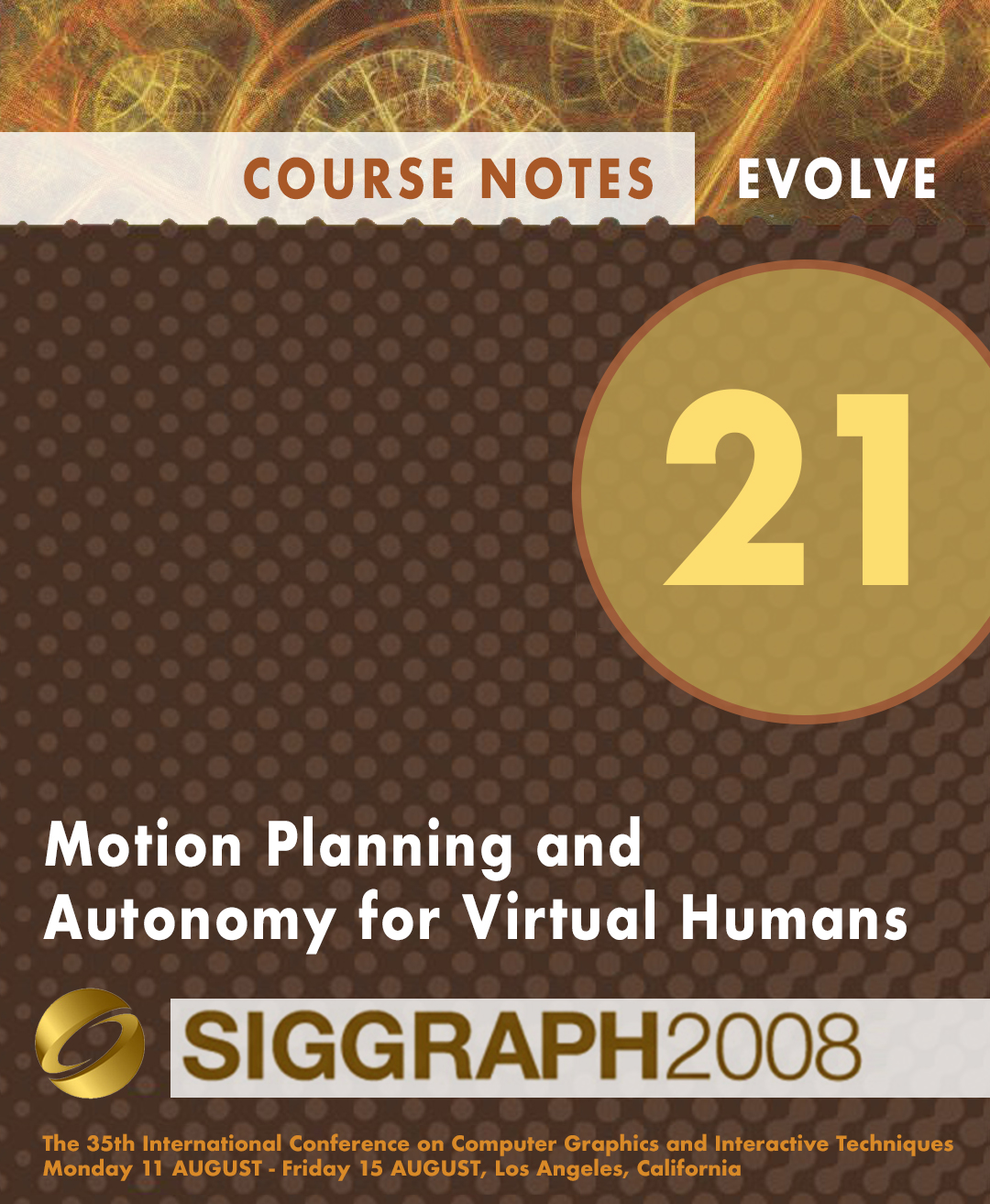“Motion Planning and Autonomy for Virtual Humans” by Pettre, Kallmann, Lin, Kuffner, Gleicher, et al. …
Conference:
Type(s):
Entry Number: 21
Title:
- Motion Planning and Autonomy for Virtual Humans
Course Organizer(s):
Presenter(s)/Author(s):
Abstract:
Prerequisites
This class addresses two different domains: Computer Animation and Motion Planning. An overview of basic Motion Planning concepts will be presented but basic Computer Animation concepts are considered to be prerequisites.
Who Should Attend
These notes are designed both for researchers and developers willing to learn more about the use of advanced Motion Planning techniques for applications in Virtual Reality, Video Games or Computer Animation Systems. The class also discusses practical implementation aspects and several examples and demonstrations are presented and discussed.
Objectives
An enormous amount of Motion Planning techniques has been developed in the past decade specifically targeting applications in Computer Animation. Going beyond the traditional path planning for navi- gation, recent techniques address challenging problems in cluttered environments ranging from crowd navigation among obstacles to multi-agent cooperative manipulation and to whole-body manipulation and locomotion planning. Given these recent advances, Motion Planning has already become a main tool for controlling autonomous virtual characters and will become crucial for empowering the next generation of Virtual Humans with the Motion Autonomy that will be needed in increasingly complex, interactive and realistic Computer Games and Virtual Reality Applications.
These notes present for the first time a systematic and comprehensive exposition of the main Motion Planning techniques that have been developed for applications in Computer Animation, in particular for the animation of Virtual Humans (VHs). These notes comprehensively document the class ”‘Motion Planning and Autonomy for Virtual Humans”’ delivered at SIGGRAPH 2008.
We start with the basic concepts of Motion Planning and then present techniques for increasingly complex problems: ranging from the navigation of single and multiple VHs to object manipulation and synchronization of manipulation and locomotion. We also explain how Motion Planning techniques can handle challenging problems involving underactuated and redundant skeletal structures of Virtual Humans and show examples of complex motions planned in high-dimensional configuration spaces subjected to geometric and kinematic constraints. The advantages of configuration-space Motion Planning are in particular emphasized, for instance in contrast with common approaches based on executing end- effector trajectories with Inverse Kinematics. The described techniques expose the pluridisciplinary aspects of Computer Graphics and Robotics, from the Motion Planning origins in Robotics to its con- tinuous development relying on Graphics tools, to the current increasing need of motion autonomy in Computer Animation. After reading these notes, the reader will obtain a clear understanding of the potential of Motion Planning and the new dimension of motion autonomy that is being achieved by its variety of techniques.




